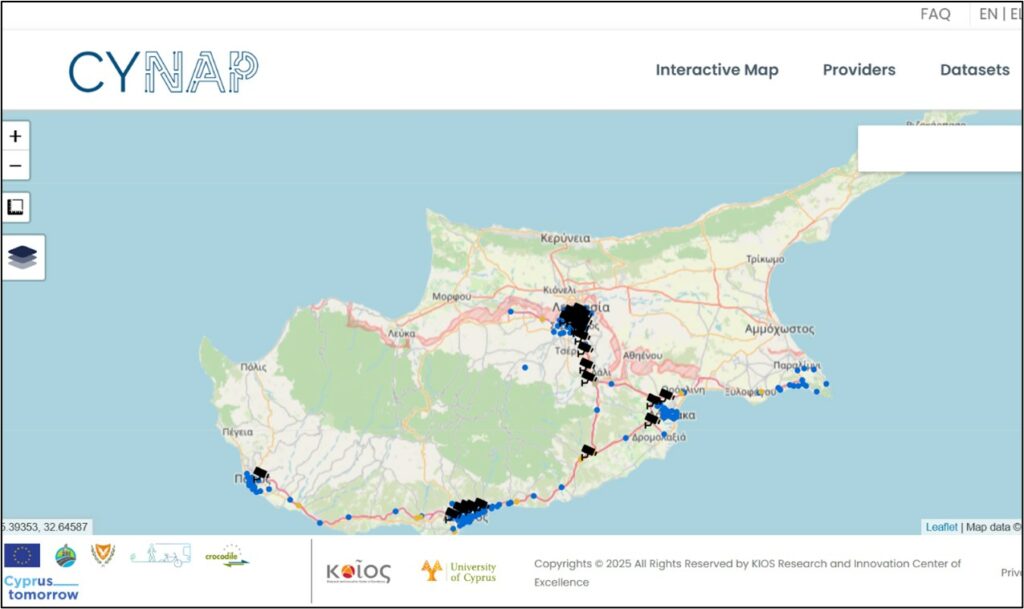Filenews 4 August 25
Those drivers who believe from their daily experience on the roads that vehicle traffic has increased are not mistaken. Do we want proof?
In the Limassol Bypass alone (in Agios Athanasios), in ten years the number of vehicles increased from 68,000 per day to 91,000, recording an increase of 23,000 per day, corresponding to 34%, breaking every previous record!
In fact, between the hours of 7 a.m. and 8 p.m., about 5,000 vehicles are trafficked on this particular road, per hour, in four lanes. This translates to 83 vehicles per minute.
Moreover, at the entrance to Nicosia, from 30,400 vehicles registered daily in 2015, this year 41,000 are registered. This means an increase of 10,600 vehicles, which translates into a percentage of 35%.
However, the evil is not limited only to the increase in the number of vehicles, per hour, but also to the fact that the traffic peak is not limited to only 1-2 hours in the morning or even in the afternoon but extends from 7 in the morning to 8 in the evening.
In other words, no matter what time one enters the road network, the difference in the number of vehicles in circulation is not great.
The table below shows the traffic loads on the main roads in Nicosia, Limassol and on motorways for June 2025 compared to the traffic loads in 2015.
Nicosia
On Strovolou Avenue the number of vehicles increased from 35,000 to 39,000, on Larnakos Avenue from 23,500 to 28,000, on Archangelou Avenue from 28,500 to 36,000, on Griva Digeni Avenue from 42,300 to 47,000, on Spyrou Kyprianou Avenue from 44,600 to 51,000 and on Hadjiiosif Avenue from 20,000 to 22,300.
Limassol
Leof. Omonia-Limassol, increased from 24,800 to 28,300
Intercity
-Nicosia-Larnaca-A2 motorway (Lymbia) from 28,000 to 31,000
-Limassol-Nicosia Motorway – A1 (Three lanes to Limassol), from 31,000 to 40,600
-Limassol-Nicosia Motorway -A1 (Agios Athanasios) from 68,000 to 91,000
The following table shows the points of the traffic meters of the Department of Public Works

As Mr. Avgousti explains, the monitoring of daily traffic shows the rapid increase in the last two years and already in several parts of Cyprus this increase is noticeable by users.
He also observes that in several road arteries the increase occurs in the form of the shortening of peak hours where traffic remains increased from the morning rush hour to the afternoon and remains constant for over 8-10 hours a day, something that happens, for example, in the Limassol Bypass (A1 Motorway) where daily traffic has already exceeded (from 2024) The 91,000 vehicles per day in both directions (four lanes) and hourly traffic is about the same from 7 a.m. to 8 p.m., with about 5,000 vehicles/hour in four lanes.
Mr. Avgoustis also records the following:
In a similar analysis of the traffic data we had prepared exactly 10 years ago, the daily traffic in the Limassol Bypass amounted to 68,000 vehicles per day in both directions and compared to 2025 the increase is unrealistic since 23,000 more vehicles per day are now recorded, a huge increase of 34% that had never been recorded before.
The same increase is also recorded at the entrance of Nicosia in the three lanes, where in 2015 30,400 vehicles were registered, while in 2025, 41,000 vehicles, showing an increase of 10,600 vehicles, corresponding to a percentage of 35%.
It also indicates that data recorded in the first half of the year (January-June 2025) show an increasing trend in traffic on a nationwide basis.
He also mentions that when comparing the recent traffic data with data analyzed for the same periods in 2015, from data on main roads in Nicosia and on sections of motorways, the increase in traffic is particularly increased. Compared to June 2015, the increases range from 10-35%.
According to Mr. Augustis, the paradox that has become apparent since 2024, but not as strongly as this year, is that traffic on some main road arteries is slightly increased in June/July after the closure of schools, something that did not happen before.
Asked "what attributes the differentiation", he said that the operation of summer schools and the continuation of children's activities may explain this phenomenon somehow.
Regarding the percentage increase in traffic observed in Nicosia within 2025 (compared to 2024), Mr. Augustis mentions that in some of the main road arteries it ranges from 5-10%, while the increase is particularly noticeable on the main avenues of the capital, such as Strovolos Avenue, Larnakos, Archangelos and Limassol.
Moreover, in some sections of Sp. Kyprianou Avenue (former Troodos) a decrease in traffic has been recorded due to the operation of the Nicosia Bypass Motorway (A22) a year ago.
As far as Limassol is concerned, with the growth that has taken place in recent years, the increase in traffic is rapid and somewhat expected, while in Nicosia the traffic shows large increases due to the new developments and constructions, the presence of Universities, students and the travel for the transport of products/deliveries (logistics) which have increased throughout Cyprus.
In the motorway network, the increase in the Nicosia-Limassol motorway (A2) and the Larnaca Airport Bypass (A3) is indicative, while an increase of more than 6,000 vehicles per day compared to 2022-2023 is shown at the entrance of Paphos in Konia (A6 motorway).
Mr. Avgoustis says that traffic is now increasing at a rapid pace that we have never seen before, while at the same time private vehicle registrations are increasing.
The fact that some sections of the road network that are necessary and it is hoped that they will contribute to the better distribution of traffic loads is considered positive in the whole scenario.
"The use of technology and regional urban traffic control systems is expected to contribute to the alleviation of congestion," added Mr. Augustis.

